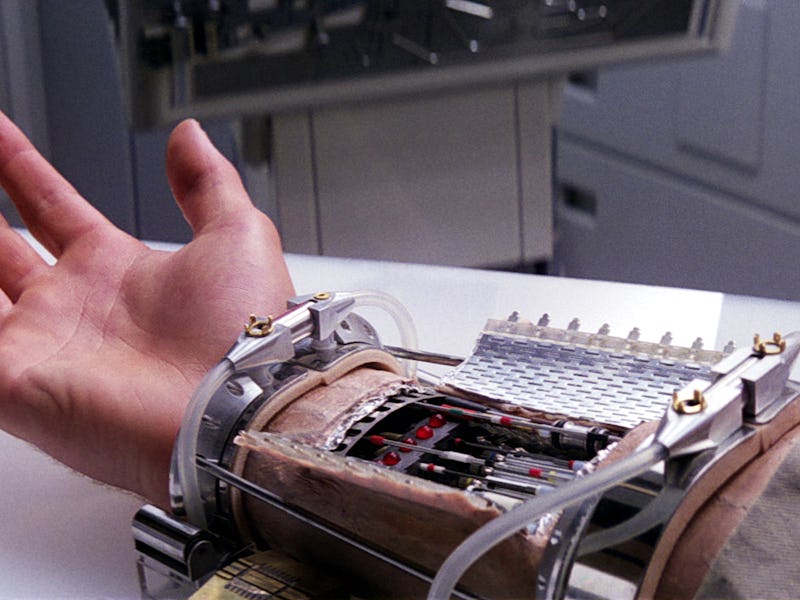Mind-Controlled Prosthetic Robot Arm Waggles Fingers for First Time
One step closer to a Skywalker hand.

Throughout human history, the hand has been irreplaceable — prostheses, as clever as they were, couldn’t match nerves, bones, and sinew. As robotics improve, actuators and metal do a decent thumb-and-index impression. On the other hand, robotic fingers on a prosthetic hand generally clench in unison, which is great if you’re trying to catch a ball, but less so if you want to hold a pen or pick up earphones.
Wiggling, however, is on the horizon, thanks to studies like the one published recently in the Journal of Neural Engineering. Using a brain-computer interface the size of a business card and sporting 128 electrodes, a patient was able to individually waggle digits — a maneuver Johns Hopkins University neurologists say is unprecedented for prostheses.
An epilepsy patient who was not an amputee (but instead a volunteer tester for the brain-computer system already about to have brain surgery at Johns Hopkins so doctors could map the cerebral epicenter of his seizures) quickly took to the device. While learning to use a prosthetic typically takes hours of acclimation and training, the brain control of the arm in this instance was accomplished almost immediately, the researchers said in a press release.
We’re still not quite at Star Wars levels of replacement arms, as the Johns Hopkins tech is still decidedly experimental. Advanced prosthetics, however, have already made their way through FDA approval en route to market, such as Segway inventor Dean Kamen’s so-called Luke arm. We’re closer than ever to finally replacing the irreplaceable.